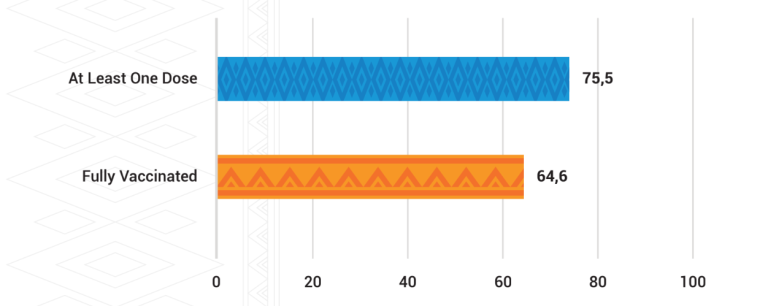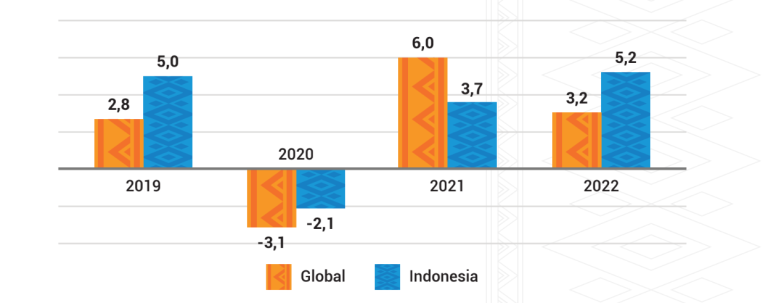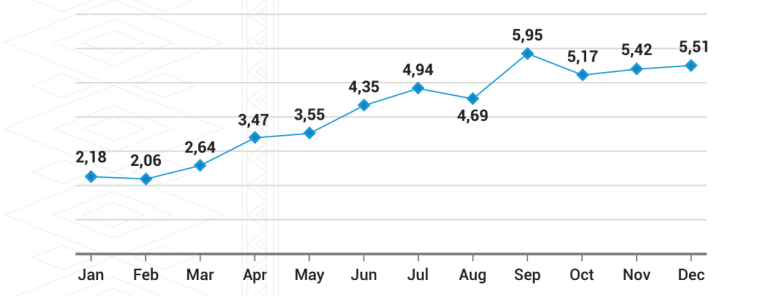A Year of Interlinked Crises
As 2022 approached, national optimism ran high in Indonesia. The world’s fourth most populous country had just taken up presidency of the G20 and was preparing to hold the two-day G20 summit in Bali under the slogan “Recover Together, Recover Stronger”. Indonesia’s call for unity and its promise to serve as a voice for less developed nations could not have been timelier as UN Secretary General Antonio Guterres warned of the dangers of a two-tiered recovery from COVID-19 and a world on a “highway to climate hell”.
Then in February 2022, Russia invaded Ukraine and as G20 host, Indonesia found itself amid several international crises. The war also had a profound domestic impact. Indonesia is one of the world’s largest wheat importers, so was highly vulnerable to the spiking food, fuel, and fertilizer prices, and inflationary pressure it caused. Nonetheless, at a macro level, Indonesia emerged strongly from 2022’s interlinked crises, with an annual GDP growth of 5.31%. Meanwhile, swift policy responses to COVID-19 boosted the number of administered vaccine doses to more than 445 million.


Indonesia’s economic recovery from COVID-19 coincided with unemployment (SDG8) dropping to near pre-pandemic levels, while the number of people living under the poverty line (SDG 1), continued to fall from its September 2020 peak. Yet Indonesia’s economic recovery remains uneven, with the wealthiest households emerging from COVID-19-induced economic setbacks, but the remainder experiencing stagnation or even deterioration (SDG10). Households headed by people with less education, by women, or which have a member with a disability have worse prospects for recovery. The war in Ukraine also had more severe ramifications for vulnerable groups, eroding domestic purchasing powers and forcing low-income households to drastically cut their consumption budgets.
State institutions were forced into belt-tightening, too. To cope with rising inflation and pre-empt large capital outflows, Bank Indonesia raised policy interest rates. Meanwhile, the depreciating Indonesian Rupiah put further pressure on debts and import bills, and remittances declined. To prevent spiking crude oil prices adding more inflationary pressure to consumer prices, Indonesia raised fossil fuel subsidies and compensation for domestic energy firms. However, this could undermine efforts to meet the country’s commitments to mitigating the climate emergency.

Indonesia’s Presidency brought the Group of 20 economies to joint commitments on tackling global challenges. Among the most significant aspects of the G20 Bali Leaders’ Declaration was an agreement on the importance of upholding international law and the multilateral system. It also led to the formation of a Pandemic Fund to help low- and middle-income countries mitigate the risks of future pandemic threats, adoption of the Bali Energy Transitions Roadmap, and the formation and operation of a resilience and sustainability trust for countries facing crises. Indonesia’s diplomatic leadership is set to continue throughout 2023. In November 2022, it took up the Chair of the Association of Southeast Asian Nations (ASEAN) in a ceremony at which President Joko Widodo said Indonesia committed to “build the institutional capacity and effectiveness of ASEAN to ensure faster growth, inclusivity, and economic sustainability of the region”.

